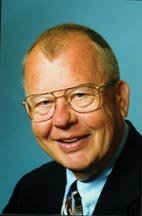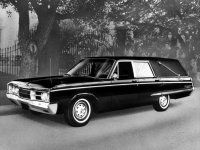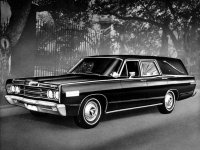By Ron Hast
Several months before February 1957, my best friend and soon-to-be lifetime partner in business, Allan Abbott, and I bought a 1941 Packard Hearse for $40 plus $1.20 sales tax. We were both 19.
Each of us had entered college and he had chosen a career in geology. His classes included field trips to the desert and the hearse seemed perfect, novel and cheap for that purpose. My parents weren’t impressed. We were able to mine enough halite (salt crystal clumps) in Amboy, California, to sell to a rock shop and pay for the hearse.
My inspiration to consider floral transportation with the hearse resulted from a part-time job at age 12, assisting the delivery person for a florist. Even though I was scared entering funeral homes and placing flowers next to bodies, it seemed fascinating.
One director said it was difficult to find reliable help to transfer flowers from the funeral home or church to the cemetery following services. Calling on more funeral homes, we left our telephone number on a piece of paper offering floral transportation. Our total liquid financial assets were less than $100, including the hearse.
We were first called by Mary O’Connor to report to the then Luke O’Connor & Sons Funeral Home in Los Angeles on February 21, 1957. While loading about 30 sprays, easels and baskets, carrying them one by one carefully, Mrs. O’Connor said, “Have you ever done this before? You are so careful with the flowers; most transporters handle them in quantity.” I assured her the flowers would be perfect when the procession arrived. We proceeded to Holy Cross Cemetery and quickly went to other decorated graves and determined which setup seemed most attractive. The first funeral director who mentioned flower transportation drew a picture of a grave site, showing the grave, mound and chairs, and drew an “X” for sprays, “O” for pots and “U” for standing easels – as if setting a stage. Jim O’Connor told his mother he had never seen a more detailed setup of flowers. Our phones have not stopped ringing since then.
Soon, we left college and began the Abbott & Hast Flower Transportation Service. Our fee for floral delivery was $7.50. We bought and sold old hearses to upgrade along with our expanding need. Our first new car purchase was a 1958 Chevrolet Sedan Delivery for $1,840. Old hearses for floral delivery were soon phased out.
We then changed the name of our firm to Abbott & Hast Mortuary Accommodation Company. We were engaged to transport a body from a distance of 400 miles for a charge of $95. Gas was typically 25 cents a gallon. We purchased a modified 1949 Cadillac limousine with two-man ambulance cot to expand on first-calls. A one-man call cost $12. We purchased two newer 1948 Packard hearses suitable for hearse service, for which we charged $15. Utter-McKinley Mortuaries (16 locations, 300 calls monthly) engaged us to obtain all death certificate signatures, enter vital statistics, file and deliver to the main location. Our revenue was $2.50 each, totaling $750 a month. We hired Allan’s brother full time as office typist and coordinator. Allan and a new motorcycle covered greater Los Angeles averaging 10 signatures per weekday. We rented the recently
closed Ivy Overholtzer funeral home in the center of the city, with 10 indoor garages, for $275 a month. This building was among 29 funeral homes within an approximate square mile, a zoned area in the center of Los Angeles known as “death valley or mortuary row.” All were typically supported by their religious or fraternal connections.
Because we had bought a new typewriter on a payment plan with Bank of America, having made 16 payments of $11.16 on time with unblemished credit, we were able to finance three new 1959 Superior three-way side service hearses costing $12,500 each. We weren’t quite 21, the legal age to sign. They didn’t ask and we didn’t tell.
When a new freeway project condemned the funeral home we were renting, we leased the former AAA Auto Club building and converted 17 offices upstairs to a dormitory for our 24-hour staff. At that time, renting limousines for hire required a use permit per vehicle, which cost $5,000 per permit. We proved to the Transportation Board that the existing limousine services were not up to the funeral service standards that we committed to and were granted four permits free of charge having proved ?need and necessity? after a bitter challenge by all other permit holders. We purchased four new 1960 Cadillac limousines for $8,200 each.
Our services expanded to serve more than 100 funeral homes every month primarily in the greater Los Angeles region. Many funeral homes did not own a hearse and/or limousine, and relied on us entirely. Our staff grew to over 50 and a fleet of over 50 vehicles. The most calls we responded to in one day was 203, during the Hong Kong Flu epidemic. Our services included floral transportation, hearse and limousine service, pallbearers, local and long distance first-calls, death certificate service, and airline shipping arrangements and transportation. We were the first company to scatter cremated remains at sea by aircraft beginning in 1965 when it became legal in California, with one flight per cremated remains (due to a law protecting cemetery
interests). When restrictions were lifted in 1970, we began providing services by motor yacht, including the presence of families. We also provided the removal and relocation of bodies interred in cemeteries.
Our business activities all related to death care. Most achievement was from the investments in buildings and real property acquired, and appreciated values. Slim on profits, we agreed to have a consultant review our procedures. This gentleman suggested two concepts that stabilized our company. First, he drew up a report form on one piece of paper that would be completed and placed on my desk every day. It indicated the total amount of service income each business day, the total amount of money received each day, the total amount of owed bills on hand each day, the total amount of checks written each day and the bank balance. The report later included the same balances for the same day a month prior and the year prior for constant comparison. The second concept was significant. With every check deposited, four percent was written out of the general account and deposited at the same time in a separate savings account. The account was used only for special occasions, investments or occasionally for a loan to our general account. Our own internal bank stabilized any financial needs and allowed us to buy our first new airplane, properties and other investments. I cannot overstate the value of this one activity.
In 1960, the creator of the “Jim Wilson Desk” at American Airlines, Harry Bate, established a special outreach to funeral homes for the shipment of bodies system-wide, which also enhanced the patronage of family transportation in harmony with the decedent. At the time, a “sleeping bag type” rental unit known as PADAT was utilized by airlines, as its tight dimension strapped to the casket allowed for expanded opportunities to final destinations in smaller aircraft. But they had a major problem: caskets were constantly arriving at the funeral home destination with dents and damage, with no evidence of damage outside the container. The airline was forced to assume damage claims and sometimes pay for a new casket when the cause of the damage could not be identified. After studying the potential causes for damage, I created the wooden tray with the smallest dimension that would contain a standard casket. Allan fiddled with folded cardboard and we created “The Casket Airtray”, which had a folding inner liner and a telescoping top that could lower exactly to one inch above the crown of a casket. This allowed the funeral director and airlines to know which aircraft could accommodate the shipment. In May 1960, the first Casket Airtray was presented at the California Funeral Directors Association convention. Its general concept has become the world standard for most all shipments. We purposely did not patent the unit because it seemed wrong to restrict a product that would be needed all over the country and could be created and provided near the point of shipment. Although we owned the name Casket Airtray for 17 years, it became generic when the public referred to it as an “Airtray?”, and could not be protected, even if we tried.
In 1975, we acquired Berg Publications, publishing Mortuary Management magazine. The Berg family had published this journal since 1914. In 1992, we established the Funeral Monitor weekly newsletter when a large corporation bought Funeral Service Insider and its founder and editor Jean DeSapio did not want to continue under the new ownership. Sue Simon now edits Funeral Monitor in an interpretive style. Some believe that since we are headquarted in California, we are regional. Actually, our publishing office is in California, but the Funeral Monitor editorial office is in Wisconsin, our magazine production office is in Michigan, our advertising office is in New Jersey, and the printing and mailing is done in Missouri.
What’s more, our readership is truly national. There are only about 2,100 funeral homes in the 13 western states, where Mortuary Management is saturated, with the exception of consolidators. However, the remaining 20,000 funeral homes are in the eastern states, where more than 75% of our readers originate.





